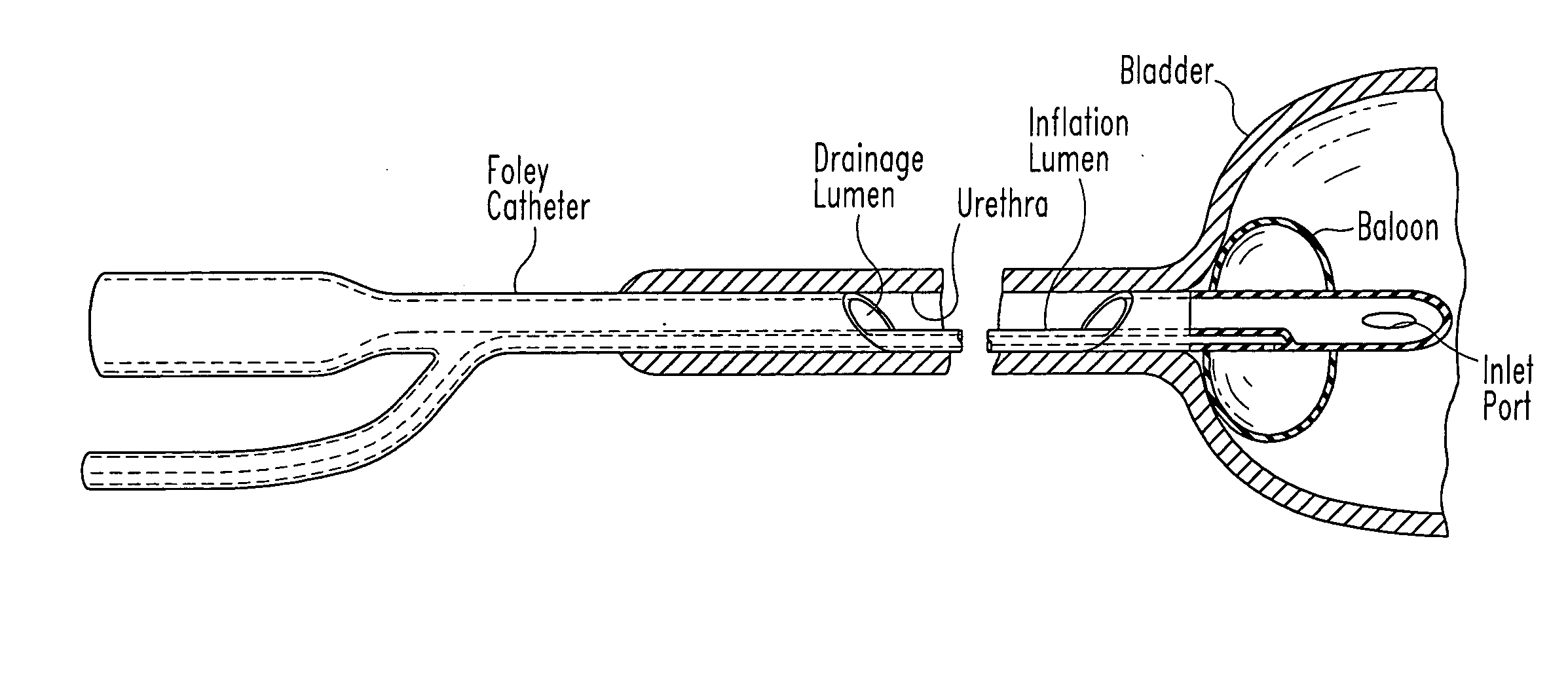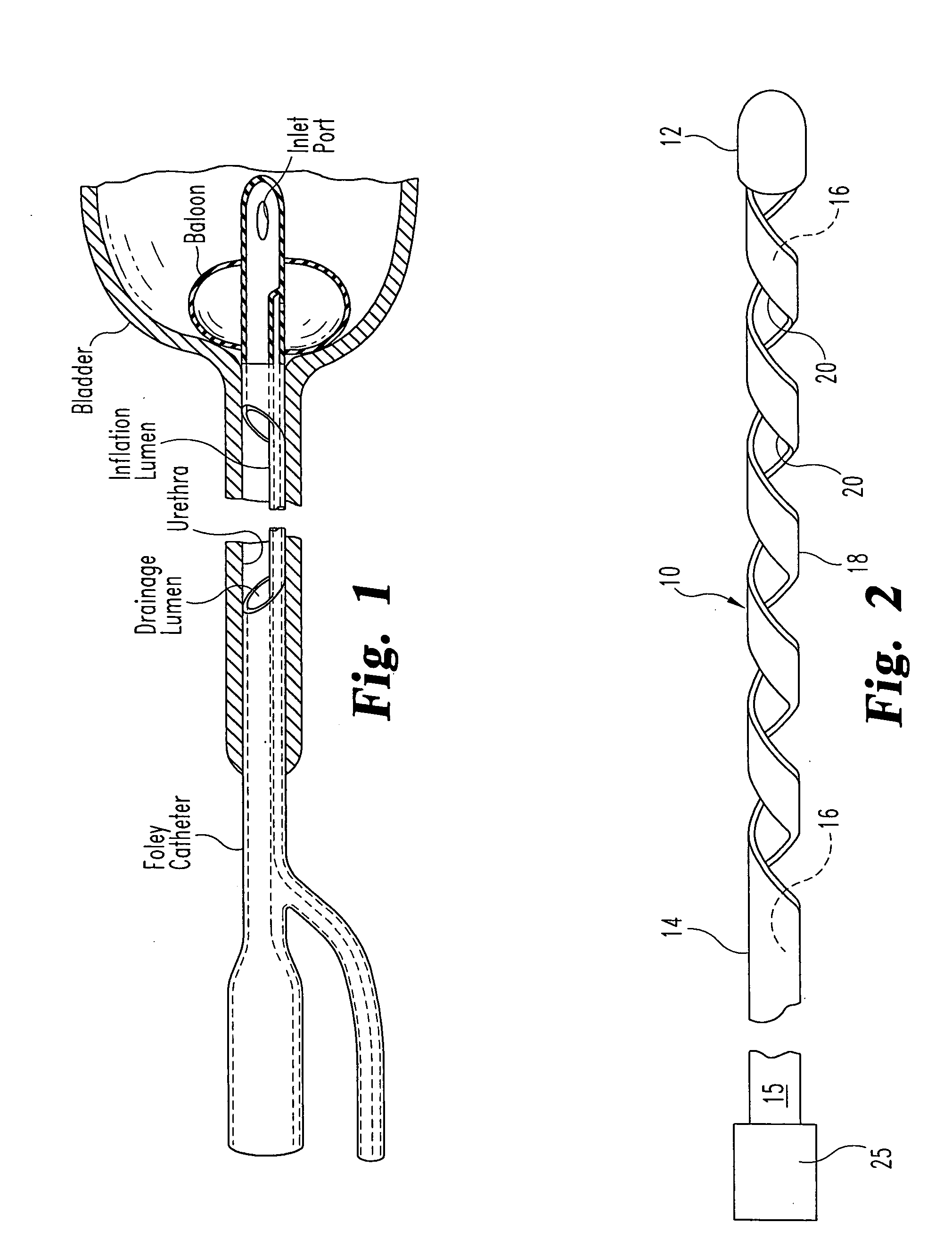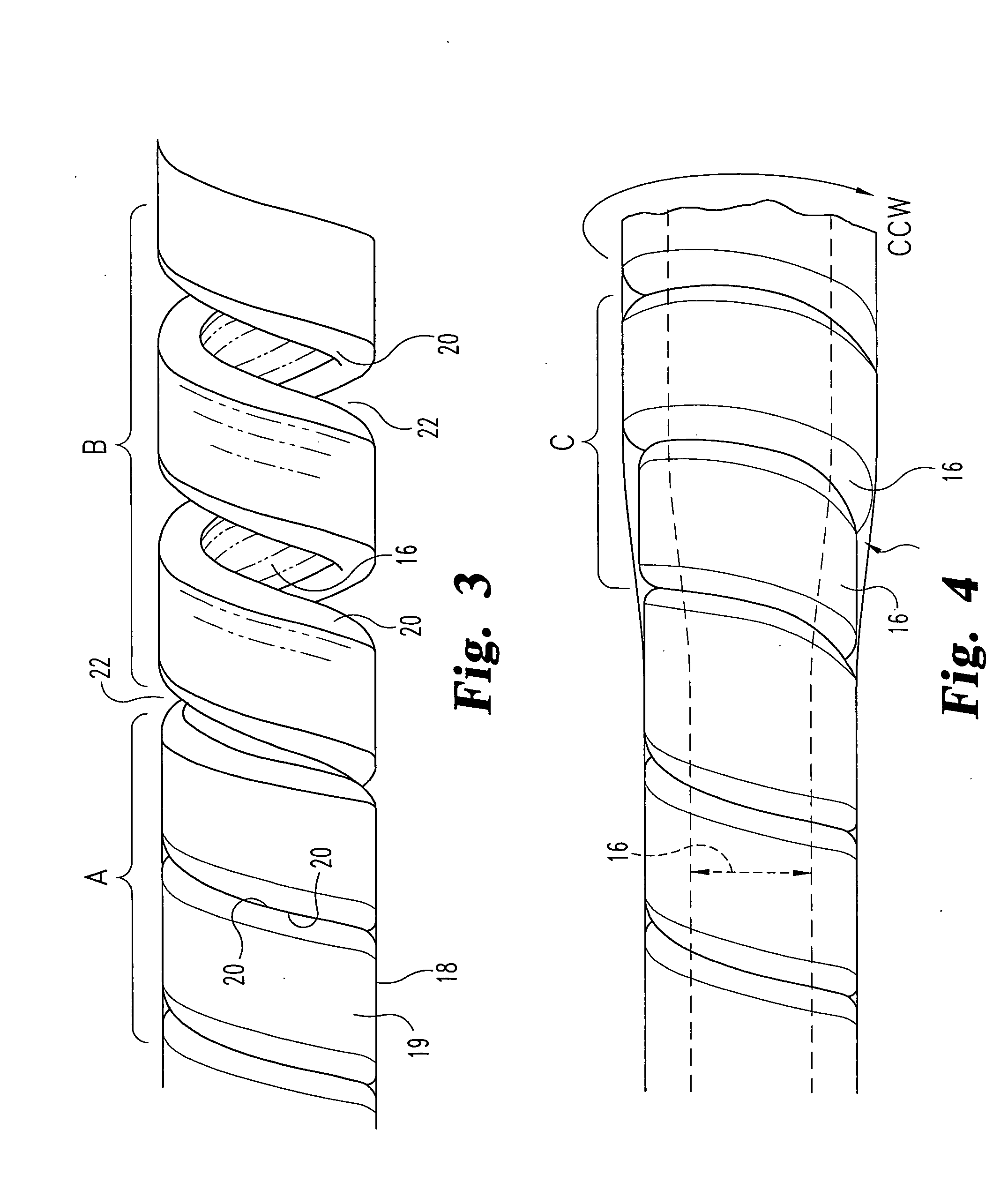Self-Cleansing Bladder Drainage Catheter
a self-cleaning, catheter technology, applied in the field of catheters, can solve the problems of life-threatening urosepsis or kidney failure, damage to the epithelium and detrusor muscles, and serious consequences of urinary tract problems, and achieve the effects of avoiding biofilm creep, easy and simple anchoring to the patient, and convenient deploymen
- Summary
- Abstract
- Description
- Claims
- Application Information
AI Technical Summary
Benefits of technology
Problems solved by technology
Method used
Image
Examples
Embodiment Construction
[0025]For the purposes of promoting an understanding of the principles of the invention, reference will now be made to the embodiments illustrated in the drawings and described in the following written specification. It is understood that no limitation to the scope of the invention is thereby intended. It is further understood that the present invention includes any alterations and modifications to the illustrated embodiments and includes further applications of the principles of the invention as would normally occur to one skilled in the art to which this invention pertains.
[0026]The present invention contemplates an indwelling urinary drainage catheter 10 shown in FIG. 2 that includes a proximal tip 12 sized and configured to pass through the bladder sphincter into the bladder. The proximal tip 12 is preferably bullet-nosed or rounded to facilitate passage through the urethra and to minimize the potential for damage to the delicate tissues within the urethra. As shown in FIG. 2, t...
PUM
 Login to View More
Login to View More Abstract
Description
Claims
Application Information
 Login to View More
Login to View More - R&D
- Intellectual Property
- Life Sciences
- Materials
- Tech Scout
- Unparalleled Data Quality
- Higher Quality Content
- 60% Fewer Hallucinations
Browse by: Latest US Patents, China's latest patents, Technical Efficacy Thesaurus, Application Domain, Technology Topic, Popular Technical Reports.
© 2025 PatSnap. All rights reserved.Legal|Privacy policy|Modern Slavery Act Transparency Statement|Sitemap|About US| Contact US: help@patsnap.com



